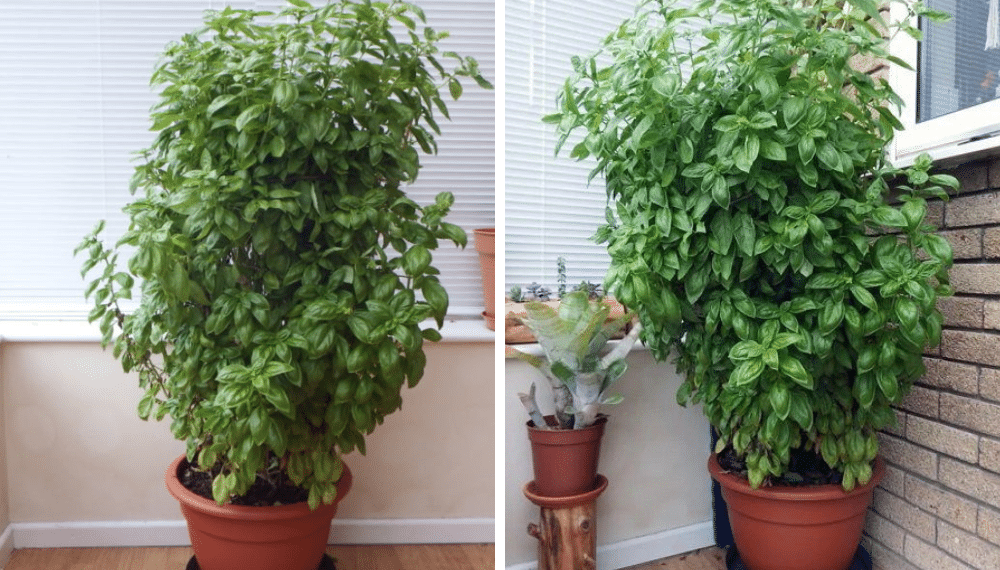
Basil, a staple herb in cuisines worldwide, is loved for its fragrant aroma, vibrant flavor, and versatility in the kitchen.
Whether you’re making pesto, garnishing a pizza, or flavoring a fresh summer salad, basil is a must-have. But did you know that with the right techniques, you can grow lush basil that thrives season after season?
By following these expert tips, you can cultivate basil plants that seem to last a lifetime, providing an endless supply of leaves for your culinary creations.
Why Grow Basil?
Basil is more than just a flavorful herb. It’s a powerhouse of health benefits and an essential addition to any home garden. Here are a few reasons to grow basil:
- Culinary Uses: Basil pairs well with a wide variety of dishes, from Italian pasta to Thai curries.
- Nutritional Value: Rich in vitamins A, C, and K, as well as essential minerals like magnesium and iron.
- Aromatic Appeal: Its delightful scent deters pests and adds a refreshing aroma to your garden.
- Pollinator Magnet: Basil flowers attract bees and other beneficial insects.
Step-by-Step Guide to Growing Lush Basil
Follow these steps to ensure your basil plants are healthy, productive, and long-lasting.
1. Choose the Right Variety
There are many types of basil, each with its own unique flavor and growth habit. Consider these popular varieties:
- Sweet Basil: The classic choice for Italian dishes.
- Thai Basil: Known for its spicy, anise-like flavor.
- Genovese Basil: A robust variety ideal for pesto.
- Purple Basil: Adds a stunning visual element to your garden.
- Lemon Basil: Offers a citrusy twist to salads and marinades.
2. Select the Ideal Location
Basil thrives in warm, sunny conditions. Here’s what to keep in mind:
- Sunlight: Basil needs 6-8 hours of direct sunlight daily.
- Soil: Opt for well-draining soil rich in organic matter. A pH between 6.0 and 7.5 is ideal.
- Temperature: Basil loves warmth; ensure the temperature stays above 50°F (10°C) to prevent damage.
3. Start with Healthy Seeds or Cuttings
- Seeds: Sow basil seeds indoors 6-8 weeks before the last frost date. Thin seedlings to the strongest plants once they sprout.
- Cuttings: Basil is one of the easiest herbs to propagate. Take a 4-6 inch cutting from a healthy plant, place it in water, and wait for roots to form before transplanting.
4. Planting Basil
- Spacing: Space plants 12-18 inches apart to allow for proper airflow and growth.
- Depth: Plant seedlings or rooted cuttings at the same depth as their original container.
- Mulch: Add a layer of organic mulch around the base to retain soil moisture and regulate temperature.
5. Watering Basil Properly
Basil needs consistent moisture but doesn’t like soggy soil. Follow these watering tips:
- Frequency: Water deeply when the top inch of soil feels dry. Avoid overhead watering to prevent fungal issues.
- Morning Watering: Water in the morning to allow the leaves to dry before nightfall.
6. Fertilize for Maximum Growth
Basil is a fast-growing herb that benefits from regular feeding:
- Organic Fertilizers: Use compost, fish emulsion, or well-balanced organic fertilizer every 2-4 weeks.
- Avoid Overfeeding: Too much fertilizer can lead to excessive foliage with less flavor.
7. Prune and Harvest Regularly
Frequent pruning encourages bushy growth and prolongs the plant’s lifespan:
- When to Prune: Start pruning when the plant has at least 6-8 leaves.
- How to Prune: Pinch off the top leaves, just above a leaf node. This stimulates new branches and prevents the plant from flowering.
- Harvesting Tip: Never remove more than one-third of the plant at a time to avoid stressing it.
8. Prevent Bolting
Bolting occurs when basil starts to flower, signaling the end of its leaf production:
- How to Prevent: Pinch off flower buds as soon as they appear to keep the plant focused on growing leaves.
- If It Flowers: You can still use the leaves, but their flavor may be slightly bitter.
9. Protect Basil from Pests and Diseases
Basil is relatively pest-resistant, but it’s not immune to problems:
- Common Pests: Aphids, whiteflies, and spider mites can be deterred with neem oil or insecticidal soap.
- Diseases: Prevent fungal diseases like downy mildew by spacing plants properly and avoiding overhead watering.
How to Keep Basil Alive Year-Round
Basil is typically grown as an annual, but with a little care, you can extend its life:
1. Grow Indoors in Winter
- Place basil near a sunny window or under grow lights.
- Use a pot with good drainage and maintain consistent watering.
2. Overwinter Outdoors
- In warmer climates, cover basil plants with a frost cloth to protect them from cold snaps.
3. Take Cuttings for Propagation
- Before frost hits, take cuttings and root them indoors to ensure a fresh supply of basil year-round.
Creative Uses for Basil
Basil isn’t just for cooking. Here are some innovative ways to use this versatile herb:
- Homemade Pesto: Blend fresh basil leaves with garlic, pine nuts, Parmesan cheese, and olive oil.
- Herbal Tea: Steep basil leaves in hot water for a refreshing tea.
- Natural Insect Repellent: Crush basil leaves and rub them on your skin to repel mosquitoes.
- Infused Oil: Add basil leaves to olive oil for a flavorful cooking oil.
- Floral Arrangements: Use basil’s vibrant green leaves and flowers in bouquets for a fragrant touch.
Common Mistakes to Avoid
- Overwatering: Too much water can lead to root rot and fungal diseases.
- Neglecting Pruning: Without regular pruning, basil plants become leggy and less productive.
- Poor Lighting: Basil needs plenty of sunlight; inadequate light results in weak, spindly growth.
- Planting Too Early: Basil is sensitive to cold and should only be planted after the danger of frost has passed.
Growing lush basil that lasts a lifetime is achievable with the right care and attention.
By selecting the right variety, providing optimal growing conditions, and practicing regular pruning and harvesting, you can enjoy a continuous supply of this flavorful herb year-round.
Whether you’re a seasoned gardener or a beginner, basil is a rewarding plant that enhances both your garden and your meals.


